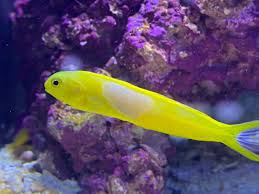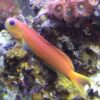The Dragon in the Paintings and Crafts of China’s Ethnic Minorities: A Symbol of Tradition and Identity

In China, the dragon is not only a mythical creature but a powerful symbol embedded deeply in the culture, history, and beliefs of its diverse ethnic groups. The significance of the dragon transcends borders, from the Han majority to the various minority communities that contribute to China’s rich cultural tapestry. Among the country’s 56 recognized ethnic groups, the dragon appears prominently in their traditional artwork, including paintings and crafts, where it embodies a range of meanings—spanning from power, fertility, and protection to spirituality and connection with nature. Through centuries-old techniques and styles, these communities have kept the dragon alive in their artistic expressions, preserving a cultural link to the past while continuing to enrich contemporary art.
The Role of the Dragon in Chinese Mythology
Before exploring the dragon in the artwork of China’s ethnic minorities, it is essential to understand its role in Chinese mythology. The dragon, traditionally known as long (龙), is regarded as a celestial being with dominion over water, rain, and natural elements. It symbolizes power, prosperity, and good fortune. In Chinese cosmology, the dragon is often linked with the emperor, embodying imperial authority, strength, and divine favor. The dragon is also deeply associated with the five elements—wood, fire, earth, metal, and water—giving it a broad and symbolic significance.
However, the dragon’s meaning and form can vary greatly among different ethnic groups in China. These groups, each with their own customs, languages, and beliefs, have infused the dragon with local nuances, resulting in distinctive interpretations and artistic representations. While some of these interpretations are shaped by ancient Chinese traditions, many minority communities have reimagined the dragon through their own cultural lens, incorporating it into their unique visual languages.
The Dragon in the Artwork of the Miao People
The Miao people, one of the most prominent ethnic minorities in China, have a rich history of textile art, embroidery, and silverwork. The dragon appears frequently in Miao art, often used in decorative pieces such as clothing, jewelry, and accessories. For the Miao, the dragon is a symbol of power and is frequently associated with agricultural prosperity, protection, and spiritual strength.
In Miao embroidery, the dragon is usually depicted with intricate designs and vibrant colors, blending elements of nature and mythology. The dragon is often intertwined with clouds, flowers, and animals, suggesting its connection to the natural world and its ability to control the weather. The use of gold and silver thread in Miao embroidery adds a sense of grandeur and importance to the dragon, making it an emblem of good fortune and social status.
The Miao also feature dragons in their silver jewelry, especially in the form of pendants, bracelets, and earrings. These silver dragon motifs are not only decorative but are believed to carry spiritual significance. They are thought to protect the wearer from evil spirits, illness, and misfortune, aligning with the dragon’s role as a guardian of harmony and balance.
The Dragon in Tibetan Art
In Tibetan culture, the dragon—known as lungta—has a slightly different connotation. It is often linked to wind and the spirit of freedom. The dragon is represented in Tibetan art as a powerful creature capable of carrying prayers and wishes to the heavens. This image is prevalent in the thangkas (traditional Tibetan scroll paintings), which depict a variety of mythological figures, including dragons.
In Tibetan thangkas, the dragon is usually shown coiling around clouds, with a ball in its mouth, symbolizing the “jewel of wisdom” or spiritual knowledge. The presence of the dragon in these artworks is a reminder of the connection between the earthly realm and the divine. The dragon, through its celestial role, facilitates the transmission of spiritual teachings and blessings.
Tibetan dragon art often contrasts with other representations in Chinese art by incorporating influences from both Buddhist iconography and local shamanistic traditions. These dragons are less concerned with material wealth and power and instead emphasize spiritual growth, protection from negative forces, and the perpetuation of good karma.
The Dragon in the Art of the Dong People
The Dong ethnic group, known for their distinctive architectural styles and rich musical traditions, also incorporate dragons into their visual art, particularly in their wood carvings and textile designs. For the Dong people, the dragon is not just a symbol of power but also of fertility and the nurturing of life. Dragons are often depicted alongside other elements of nature, such as mountains, rivers, and forests, highlighting the deep connection the Dong have with the natural world.
In Dong embroidery, the dragon is often combined with motifs like phoenixes, tigers, and other animals, creating a dynamic and harmonious image of balance between different forces of nature. This balance is central to the Dong philosophy, where the dragon embodies both male and female energies, representing harmony between opposing forces. The dragon’s role in these artworks also emphasizes the Dong people’s connection to ancestral spirits and their beliefs in spiritual guardianship.
The Dong people’s wood carvings frequently feature dragons as protectors of sacred spaces, such as their famous drum towers and folk houses. These carved dragons are meant to ward off evil spirits and bring good fortune to the community. Their intricate designs often feature scales, swirling clouds, and flames, giving the dragon a fierce yet benevolent appearance that reflects both its power and its protective role.
The Dragon in the Art of the Zhuang People
The Zhuang, China’s largest ethnic minority group, are known for their vibrant and colorful art, particularly in their textiles and embroidery. The dragon holds an important place in Zhuang art, where it often appears in their intricate brocade work. Much like the Miao people, the Zhuang use the dragon as a symbol of prosperity and good fortune. However, in Zhuang culture, the dragon is also seen as a symbol of fertility and the protection of the land.
In Zhuang textile art, dragons are often paired with other auspicious symbols, such as the phoenix, which represents harmony in Chinese tradition. The dragon’s appearance in these works is often intertwined with representations of the earth and the harvest, underlining its role in agricultural prosperity. For the Zhuang, the dragon is not merely a celestial figure; it is a tangible force in everyday life, one that ensures the success of the harvest and the well-being of the community.
The Zhuang also incorporate dragons in their traditional rituals and festivals. During celebrations, such as the Zhuang New Year, dragon motifs are used in dances, costumes, and decorations. The dragon dance, in which performers wear dragon costumes, is a central part of these festivities, symbolizing the arrival of a prosperous new year and the driving away of evil spirits.
The Dragon in the Art of the Yao People
The Yao people, with their distinct culture and rich heritage, also have a long tradition of dragon imagery in their art, especially in their embroidered textiles and wood carvings. The dragon in Yao art is often depicted with elements of nature, such as water, mountains, and fire, emphasizing the dragon’s role as a guardian of both the natural and spiritual realms.
In Yao embroidery, dragons are often paired with other mythological creatures, such as the phoenix and qilin, to create vibrant and powerful compositions. These dragon motifs are thought to bring balance and harmony to the community, ensuring the safety and well-being of all its members. The Yao people believe that the dragon holds the power to ward off evil spirits and bring about peace and prosperity.
Wood carvings of dragons are also common in Yao culture, where they are placed on door frames, windows, and household items to bring protection and good fortune to the home. These carvings, often intricately detailed, reflect the Yao people’s reverence for the dragon as a spiritual force that influences both the material and metaphysical aspects of life.
The Dragon in Contemporary Art of Ethnic Minorities
In recent years, the dragon has continued to feature prominently in the artwork of China’s ethnic minorities, albeit in more contemporary forms. Many artists from these communities have sought to preserve their cultural heritage by reinterpreting traditional motifs in modern ways. These dragons, while still maintaining their cultural significance, are often reimagined through new mediums, such as digital art, sculpture, and mixed media.
Contemporary dragon art from China’s ethnic minorities often blends traditional craftsmanship with modern aesthetics, creating pieces that resonate with both local audiences and the global art world. These artworks reflect the enduring power of the dragon as a symbol of identity, continuity, and connection to the past, while also embracing the challenges and transformations of the modern world.
Conclusion: The Dragon as a Cultural Bridge
The dragon, in its many forms, remains a symbol of power, protection, and prosperity for China’s ethnic minorities. From intricate embroidery to wood carvings, the dragon has continued to inspire generations of artists, providing a link between the past and present. For these communities, the dragon is not just a mythical creature; it is a living symbol of their beliefs, traditions, and identity.
As China’s ethnic minorities continue to create new forms of artistic expression, the dragon remains an important cultural bridge, connecting generations, transcending borders, and offering a glimpse into the rich diversity of Chinese art and culture. Through these artistic representations, the dragon continues to play a vital role in the lives of those who cherish and preserve it, ensuring its enduring legacy for years to come.


